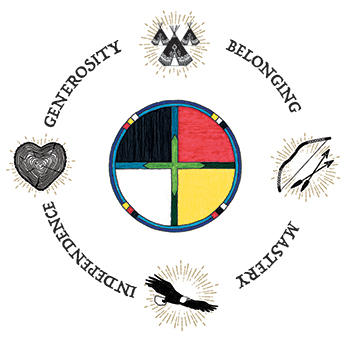Step 1: Focus on Student Resilience
What is student resilience?
Student Resilience is the ability to achieve positive outcomes—mentally, emotionally, socially, and spiritually despite adversity.
To focus on student resilience, start by creating a set core of values and beliefs about the children you serve. The Circle of Courage is a model of positive youth development based on the universal principle to be emotionally healthy, all youth need a sense of belonging, mastery, independence, and generosity.

What does this look like in a school?
Belonging at school is when every student believes they are valued, seen, heard, and cared for.
Mastery at school is when every student believes they can achieve despite their challenges.
Independence at school is when every student believes they have the power to make decisions that will impact their own lives.
Generosity at school is when every student believes they have a purpose for their lives that can positively contribute to the world.
Click here for a resilience activity to help connect more with your students.
Looking to learn more about how to do this in your classroom or across your building for all students? Reach out to Starr Commonwealth today for a personalized consultation about our training and consulting services to help ensure every child learns in an environment where they can flourish!

